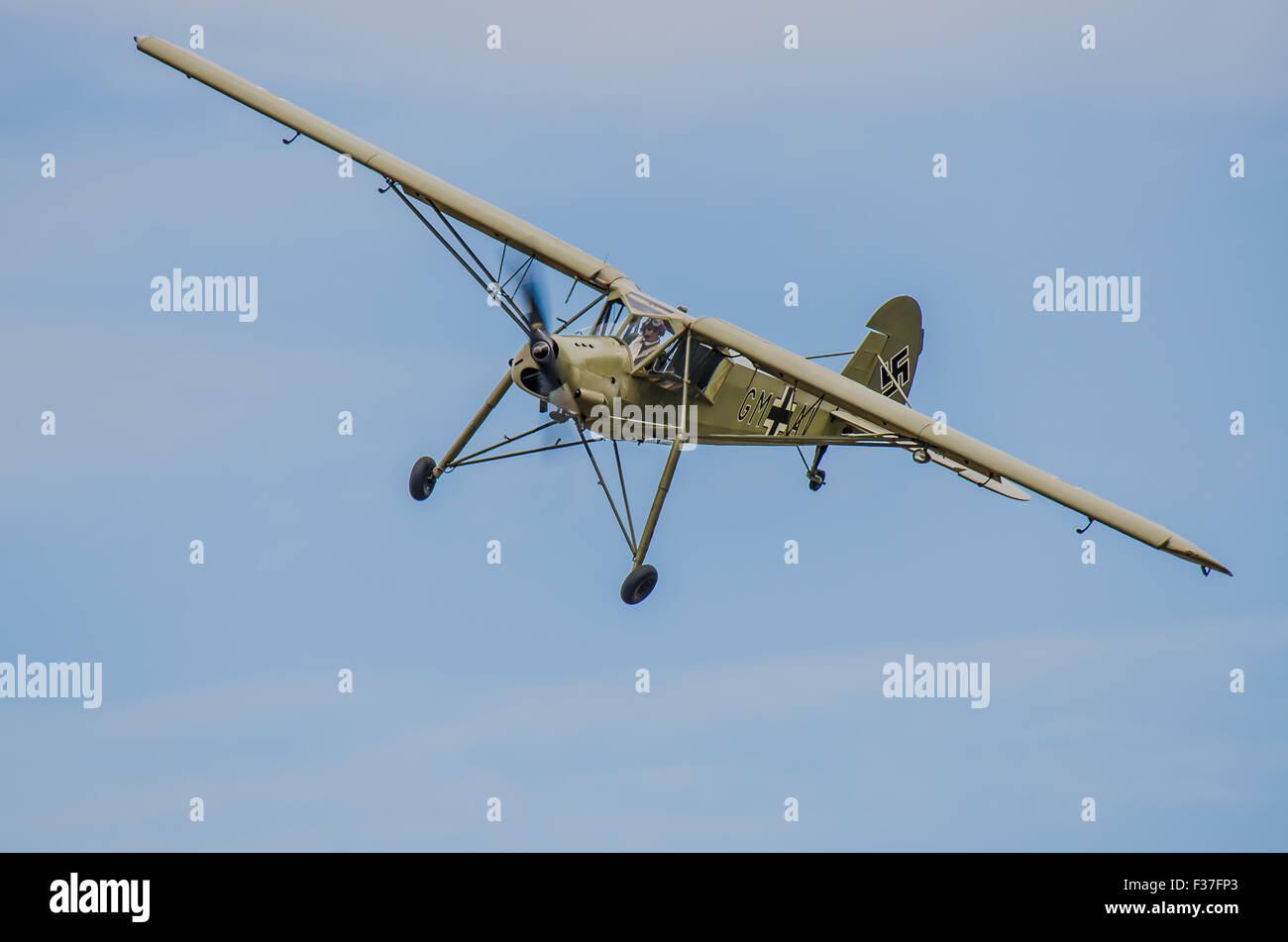Fieseler Fi 156 Storch (English: Stork) was a small German liaison aircraft built by Fieseler before and during World War II

Image details
Contributor:
Avpics / Alamy Stock PhotoImage ID:
F37FP3File size:
71.9 MB (752.7 KB Compressed download)Releases:
Model - no | Property - noDo I need a release?Dimensions:
6159 x 4080 px | 52.1 x 34.5 cm | 20.5 x 13.6 inches | 300dpiDate taken:
9 August 2015Location:
Damyns Hall, Essex, UKMore information:
The Fieseler Fi 156 Storch (English: Stork) was a small German liaison aircraft built by Fieseler before and during World War II. Production continued in other countries into the 1950s for the private market. It remains famous to this day for its excellent STOL performance; French-built later variants often appear at air shows. In 1935, the RLM (Reichsluftfahrtministerium, Reich Aviation Ministry) invited tenders from several companies for a new Luftwaffe aircraft suitable for liaison, army co-operation (today called forward air control), and medical evacuation. This resulted in the Messerschmitt Bf 163 and Siebel Si 201 competing against the Fieseler firm's tender. Conceived by chief designer Reinhold Mewes and technical director Erich Bachem, Fieseler's design had a far better short take off and landing ("STOL") performance. A fixed slat ran along the entire length of the leading edge of the long wings, while a hinged and slotted set of control surfaces ran along the entire length of trailing edge. This was inspired by earlier 1930s Junkers Doppelflügel, "double-wing" aircraft wing control surface design. For the Fi 156, this setup along each wing panel's trailing edge was split nearly 50/50 between the inboard-located flaps and outboard-located ailerons, which themselves included trim tab devices over half of each aileron's trailing edge length. The long legs of the main landing gear contained oil-and-spring shock absorbers that had a travel of 450 mm (18 inches), allowing the aircraft to land on comparatively rough and uneven surfaces. About 2, 900 Fi 156s, mostly Cs, were produced from 1937 to 1945 at the Fieseler Factory in Kassel. In 1942, production started in the Morane-Saulnier factory at Puteaux in France. Due to the demand for Fieseler as a subcontractor for building the Bf 109 and the Fw 190, Storch production was shifted to the Leichtbau Budweis in Budweis in 1943